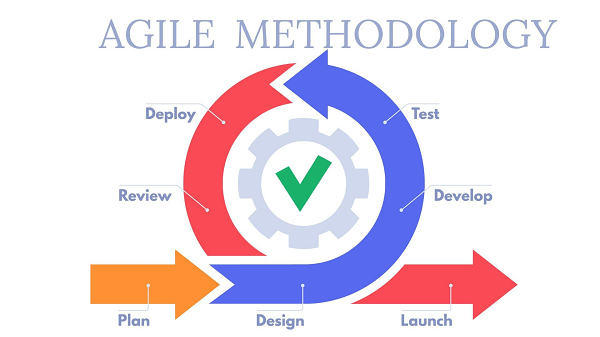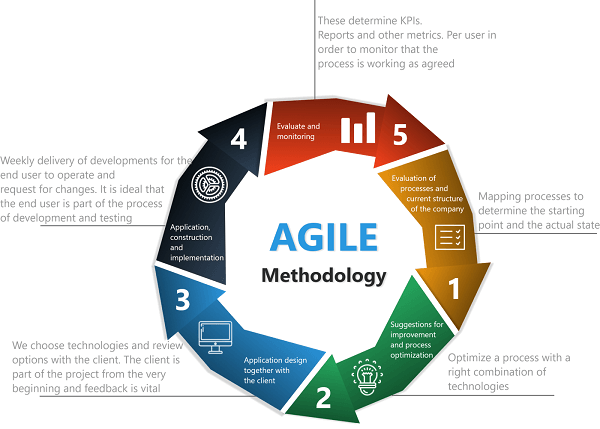Advantages and Disadvantages of Agile MethodologyIn the late nineties, those working in software development firms started to come to an understanding that "business as usual" was not effective for them. Traditional business models required lengthy planning, rigid structures, and bureaucratic obstacles that hindered creativity and made it almost impossible to adapt to changing circumstances or to deal with the unpredictable. As a result, software developers started combining old ideas with fresh ones until they came up with a solution that worked in their particular situation. 
This flexible method was so successful for them that they decided to create an approach to assist others in benefiting from a process that was based on collaboration and flexibility. The dissemination of the ideas is organic, leading to various different frameworks that people could employ in their projects. The year 2001 was the time this lack of consistency caused a group of 17 to gather at Snowbird, Utah, to discover what the commonalities between their methods were. It was found that there were only some things that people could all agree on, which eventually evolved into the Manifesto for Agile Software Development and its 12 Principles which was drafted in the Agile Alliance for "guiding practices that assist the teams in implementing and operating fluidly." What is the Agile Model?
Agile is a broad term to describe best practices as described within the Agile Manifesto. It's a set of guidelines and principles that emphasize flexibility, collaboration as well as self-organizing groups. It's about acknowledging that the same strategies do not apply to every scenario, and the ability to react quickly to change and uncertainty may also differ. Agile is, as per the Agile Alliance at its heart, an approach to deal with the uncertainty of life:
Agile Methodology is the framework for conventions, practices, methods, and guidelines that a team is willing to adhere to for a particular project or context. There may be variations in these practices from team to team and even from project to project. However, all will be adhering to Agile principles and values. Different types of Agile MethodologyThese frameworks become the basis for teams to expand, adopt the same principles and then adapt them to their own needs. There are many kinds of Agile methods that are currently widely utilized, both inside and outside of the world of software development. 1. Agile Scrum MethodologyScrum is among the most basic and widely utilized Agile methodologies. The Digital Project Manager states that the primary purpose of the Scrum Methodology "is to enhance collaboration, teamwork, and the speed at which development can be achieved." Scrum is less a method for managing projects but rather an instrument for maintaining and creating projects. Similar to the other Agile Methodologies, Scrum was designed to develop software in mind. When it comes to adapting to other sectors, adjustments are made, particularly for projects that have a set budget and timeframe. Because of these challenges and the fact that Scrum Methodology is used outside the world of software development, project managers typically utilize specific ideas within the framework and implement the concepts in a manner that fits their needs, such as self-organizing small teams, regular stand-up meetings, and reviews of the project. 2. LeanIn Lean's Digital Project Manager, the main goal of the Lean Method is efficiency. In contrast to different Agile methodologies, the Lean Method management approach is an established set of rules instead of processes to adhere to. It starts by determining what's adding value to each situation and continuously working to highlight the positive while eliminating any negative. This approach can be used in project management by looking at your team's process to manage projects and then reducing it to only the most essential aspects. According to the Lean Way, the three principles of Lean were developed first in Japan. They are Muda (Wu Tuo, waste), Mura (Ban, unevenness), and Muri (Wu Li, overburden). These principles are commonly known as the 3Ms.
3. eXtreme ProgrammingThis software development method shares many similarities with Scrum, especially its emphasis on communication. It differs from Scrum in that it has a prescriptive set of rules for designing and testing code. Because of its specific principles, the eXtreme Programming approach is difficult to apply to other types of project management. These are some of the rules that apply to software development, and they make the following mandatory- User stories are descriptions of small features, and they should be included.
4. KanbanKanban is similar to Scrum and Lean. This project management method places emphasis on efficiency (like Lean) and collaboration (like Scrum). Kanban's approach is less rigid, which allows for more flexibility and a faster rate of return on deliverables. Kanban Methodology's goal is to release work faster and with better quality. These are the core principles of Kanban:
Contrast with Waterfall MethodologyThe Waterfall Methodology, a traditional approach to project management that is more common than Agile, is the current most popular project management method in the modern workplace. According to Workfront, the Waterfall Method is a top-down approach that ensures each project phase is completed before the next one begins. It gets its name from a top-down approach. This method is most effective when there is a tangible end product, such as construction. Waterfall Method's success is dependent on how much research is done before the project begins. This kind of planning allows for better project estimates, like what kind of resources a project will require, and makes it easier to predict how long a project will take. The waterfall Method can be used in certain situations, but it also has rigidities that make it difficult to adapt to change and uncertainty. This is why Agile Methodology and other flexible methods are so appealing. They allow teams to pivot easily and change their course. Advantages of Agile Methodology
Disadvantages of Agile Methodology
ConclusionThe Agile Method is a popular project management method in software development and beyond. Because of its flexibility and adaptability to change, it is the ideal project management method for the 21st Century. Although it has its limitations, Agile Methodology is a great tool for managing projects. If used properly by a team willing to adhere to its principles, there are many benefits to Agile Methodology. The COVID-19 pandemic highlighted the importance of adaptability in the face of uncertainty. And the future seems less certain. Although Agile Methodology is not the best fit for all projects and situations, it can be selectively applied to any project to keep a team agile and ready for the unforeseen.
Next TopicAdvantages and Disadvantages of Flood
|
 For Videos Join Our Youtube Channel: Join Now
For Videos Join Our Youtube Channel: Join Now
Feedback
- Send your Feedback to [email protected]
Help Others, Please Share










